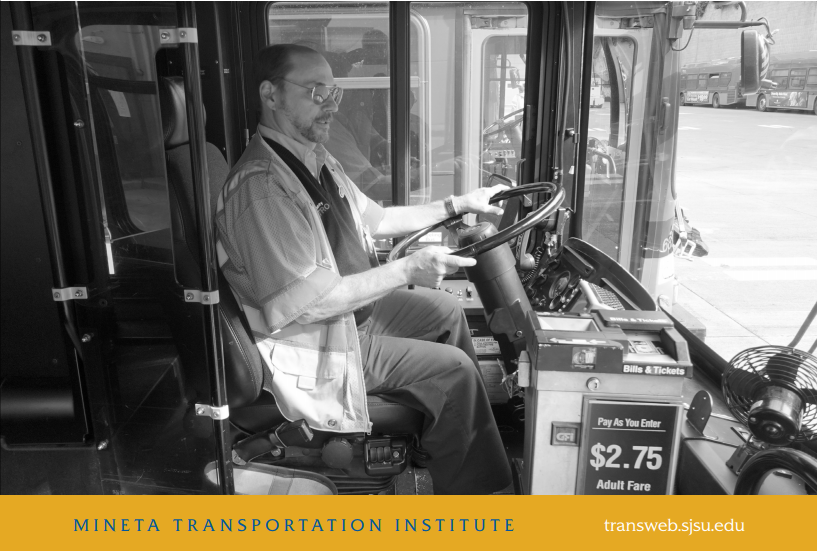- 408-924-7560
- mineta-institute@sjsu.edu
- Donate
Next Stop—Body Aches and Pains
A long road trip is often enough to cause a driver some bodily discomfort, but for city bus drivers for whom driving makes up the greater part of their day, that discomfort could have a lasting impact on their health. New Mineta Transportation Institute (MTI) research titled Not Just and Ache: Examining the Rate of Musculoskeletal Pain in City Bus Drivers by Jeremy Steele examines the rates of musculoskeletal discomfort in a sample of 957 city bus drivers at King County Metro, a public transportation agency serving the greater Seattle area. The report also reflects how often such pain prevented drivers from doing their normal work, required treatment from a medical professional, or led to one or more worker’s compensation claims.
The research builds on existing research that consistently shows that bus drivers experience higher levels of musculoskeletal disorders (MSDs) than both the general population and other employees at transit agencies. Recent literature specifically focused on bus drivers’ high exposure to whole-body vibrations (WBVs) as a potential source for musculoskeletal disorders.
Based on surveys using the Nordic questionnaire, the following are key findings:
- 85% of bus drivers reported having developed an injury or pain in at least one part of the body in the past 12 months;

- 60% reported lower back pain or injury;
- 51% reported discomfort in the shoulders;
- 47% reported knee pain or injury;
- 46% reported neck pain or injury.
Additional findings indicated that rates of pain were higher among women than men with 95% of women reporting pain versus 81% of men. Furthermore, 30-40% of respondents who had pain in the last 12 months were prevented from doing their normal work, causing 35-45% of that group to seek medical attention for those injuries or pains.
Future research on the subject should consider factors like pre-existing conditions and the potential of other factors that may contribute to the driver’s musculoskeletal health. Perhaps the most important policy recommendation from this study is the need for significant, high-level interventions at transit agencies to mitigate potential sources of musculoskeletal pain in bus drivers. The large gap between the number of workers who visited a medical professional for their pain and the number who applied for worker’s compensation suggests the existence of a large, but yet unrealized, financial burden on King County Metro.
ABOUT THE MINETA TRANSPORTATION INSTITUTE
At the Mineta Transportation Institute (MTI) at San Jose State University (SJSU) our mission is to increase mobility for all by improving the safety, efficiency, accessibility, and convenience of our nation's’ transportation system through research, education, workforce development and technology transfer. We help create a connected world. MTI was founded in 1991 and is funded through the US Departments of Transportation and Homeland Security, the California Department of Transportation, and public and private grants. MTI is affiliated with SJSU’s Lucas College and Graduate School of Business.
ABOUT THE AUTHOR
Jeremy Steele is currently in his final year of pursuing an undergraduate degree in Geography (Urban Systems) and Software Engineering at McGill University in Montréal, Canada. He works as an independent contractor for MTI, after having completed a summer internship there in 2018. His research interests lie in urban transportation planning, specifically in areas including route design, accessibility, and ease of use for riders.
###
Contact:
Irma Garcia, MTI Communications & Workforce Development Coordinator
408.924.7560
-
Contact Us
San José State University One Washington Square, San Jose, CA 95192 Phone: 408-924-7560 Email: mineta-institute@sjsu.edu





